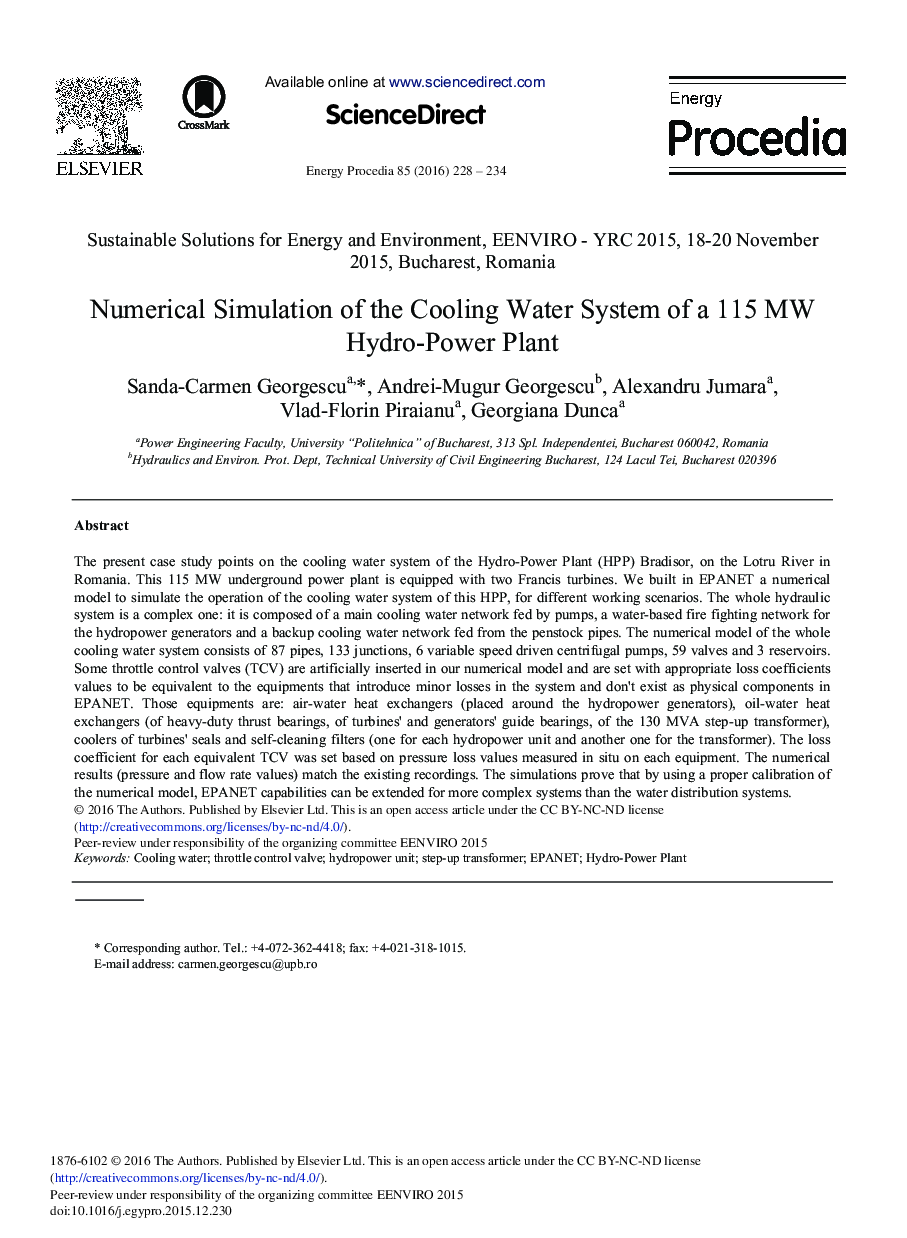| Article ID | Journal | Published Year | Pages | File Type |
|---|---|---|---|---|
| 1508983 | Energy Procedia | 2016 | 7 Pages |
The present case study points on the cooling water system of the Hydro-Power Plant (HPP) Bradisor, on the Lotru River in Romania. This 115 MW underground power plant is equipped with two Francis turbines. We built in EPANET a numerical model to simulate the operation of the cooling water system of this HPP, for different working scenarios. The whole hydraulic system is a complex one: it is composed of a main cooling water network fed by pumps, a water-based fire fighting network for the hydropower generators and a backup cooling water network fed from the penstock pipes. The numerical model of the whole cooling water system consists of 87 pipes, 133 junctions, 6 variable speed driven centrifugal pumps, 59 valves and 3 reservoirs. Some throttle control valves (TCV) are artificially inserted in our numerical model and are set with appropriate loss coefficients values to be equivalent to the equipments that introduce minor losses in the system and don’t exist as physical components in EPANET. Those equipments are: air-water heat exchangers (placed around the hydropower generators), oil-water heat exchangers (of heavy-duty thrust bearings, of turbines’ and generators’ guide bearings, of the 130 MVA step-up transformer), coolers of turbines’ seals and self-cleaning filters (one for each hydropower unit and another one for the transformer). The loss coefficient for each equivalent TCV was set based on pressure loss values measured in situ on each equipment. The numerical results (pressure and flow rate values) match the existing recordings. The simulations prove that by using a proper calibration of the numerical model, EPANET capabilities can be extended for more complex systems than the water distribution systems.
